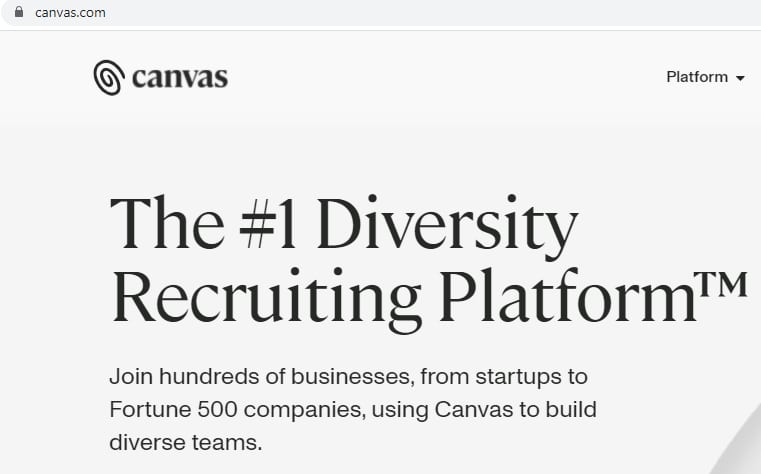A job recruiting business upgraded to a great domain name, only to get dragged to court in a trademark dispute.

In May of this year, recruiting platform Jumpstart changed its brand to Canvas and upgraded its domain from Jumpstart.me to Canvas.com. That set off a chain of events that has made this rebrand a lot more expensive.
Instructure, Inc. sued (pdf) Canvas in July, arguing that Canvas is infringing on its trademark for the word Canvas. Instructure markets learning management platforms at Instructure.com. One of its products is called Canvas, and it argues that the product aids with recruitment, creating a conflict with Canvas (the company).
Instructure is suing for trademark infringement, unfair competition, cybersquatting, and a few other claims. It is demanding that Canvas hand over the domain.
Canvas doesn’t own Canvas.com outright. It entered into a lease-to-own deal with Branded Holding Group, LLC (BHG) for the domain. Instructure previously tried to acquire the domain. In its lawsuit, it writes:
Upon information and belief, prior to Defendant’s acquisition of the www.canvas.com domain, BHG simply parked and held the domain with the obvious intention to cash in on the domain’s clear commercial value at the right time. At one point Instructure offered to purchase the domain, but BHG demanded an unreasonably-high price. Instructure was not willing to pay what BHG demanded, but cautioned BHG that it should not sell this domain to anyone operating in similar channels with similar services to Instructure’s CANVAS-branded platforms. Unfortunately, that is exactly what BHG did when it licensed the domain to Defendant.
This is another lawsuit in which a company argues that someone wouldn’t sell a domain at a reasonable price. It’s a bit different in that the plaintiff isn’t directly suing the domain owner (the lessor in this case), but assuming that BHG offered similar terms to Instructure, the argument that it was unreasonable seems contradictory. Instructure believes that Canvas paid well over $1 million to acquire the domain in the lease-to-own deal. The actual terms of the lease do not appear to be in any court filings to date.
Instructure sent a cease & desist letter (pdf) to Canvas in June before filing the lawsuit. It alleges that Canvas agreed to negotiate a rebrand:
In response to Instructure’s demand, Defendant indicated that it would be willing to rebrand and stop using CANVAS, requested a reasonable rebranding transition period, and requested money from Instructure to help with Defendant’s rebranding costs, all of which Instructure was willing to provide if Defendant also transferred the canvas.com domain to Instructure.
But Instructure alleges that Canvas decided on another path: acquiring an existing trademark that would give it rights to the term for its business purposes.
Indeed, after receiving the cease & desist letter, Canvas acquired trademark rights in a trademark for canvas from someone who used it for a business that caters to wine companies in California. The stylized trademark suggested CANVAS stood for “Concierge Alliance Napa Valley & Sonoma.” Part of the business included a job board. The owner of that mark later applied for a word mark for Canvas that includes recruiting services as a field of use.
Canvas paid $57,000 (pdf) to acquire the trademark and then provided a license back to the wine company. It also agreed to indemnify the seller.
In its response to the lawsuit (pdf), Canvas claims that the seller of the Canvas trademark related to wine is its predecessor in interest subsequent to the trademark acquisition agreement, giving it rights dating to 2010 (and 2013 for employment-related services.)
The court set a hearing for December 14 to consider several motions in the case, including one for a preliminary injunction.
Canvas recently raised a $50 million Series C funding that values the company at $400 million.






Really a hot potato case. It is not clear if the lessor warned the lessee about the past claims originating from the complainant. Also not clear if the lease agreement covers the lessee for any errors or wrong doings by the de jure domain holder. In any case, the above points should be addressed by the court and naturally shall add to the complexity of the matter.
Aslo the date of the trademark filing and the domain registration date ought ultimately to decide on whether the case stands or is a rdnh.